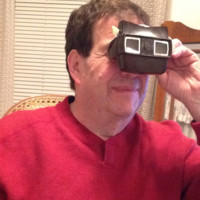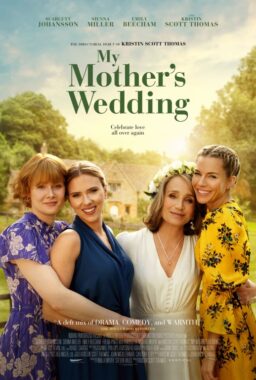Even to the most casual of moviegoers, Alfred Hitchcock needs no introduction. He’s the unrivaled Master of Suspense, the director with the most films in the top 20 on the American Film Institute’s ranking of the 100 greatest thrillers: “Psycho” (which placed atop the list); “North by Northwest”; “The Birds”; “Rear Window“; and “Vertigo,” which last year deposed “Citizen Kane” as the greatest film of all time on Sight & Sound‘s influential international critics poll.
But what of the films that introduced Alfred Hitchcock? Produced at the height of the silent era from 1925, when Hitchcock was 26, to 1929, his first 10 features are virtually unknown to the general public. They are available on home video or (horrors!) on YouTube, but in severely compromised or diminished editions. Surely, Hitchcock, one of the world’s most popular and recognized directors, deserved better.
“The Hitchcock 9,” a traveling exhibition (opening August 9 for one week at Chicago’s venerable Music Box Theatre after runs in San Francisco, Los Angeles, Seattle, and other cities) does justice to these films that offer intriguing glimpses of his nascent genius.
Each of the films, meticulously restored under the auspices of the British Film Institute, will be presented at the Music Box with live musical accompaniment by either the Mont Alto Motion Picture Orchestra (a five-piece ensemble that has been touring with the exhibition) or Dennis Scott, the Music Box’s house organist (visit the theater website for the complete schedule).
The “Hitchcock 9” (“The Mountain Eagle,” his second film, is presumed lost) are, in chronological order:
“The Pleasure Garden” (1926): A chorus girl at the Pleasure Garden theater takes under her wing an aspiring dancer who is anything but the “village innocent” she appears.

“The Lodger: A Story of the London Fog” (1927): A London boarding house welcomes a mysterious new tenant who comes under increasing suspicious of being the Avenger, a serial killer terrorizing the city. Along with “Blackmail,” this is probably the best known of the “9.” Hitchcock considered this to be “the first true ‘Hitchcock movie.'”
“Downhill” (1927): And now for something completely different: A dark morality tale about a star rugby player at a prestigious school who, out of loyalty, takes the blame for a friend who impregnated a maid.
“Easy Virtue” (1927): The notorious Larita Filton’s scandal-plagued past returns to haunt her after she remarries into a wealthy family in this adaptation of Noel Coward‘s play.

“The Ring” (1927): Hitchcock’s only credited original screenplay is a romantic melodrama about a woman torn between two boxers.
“The Farmer’s Wife” (1927): A widowed farmer, with the help of the housekeeper who secretly loves him, sets out to find himself a new wife.
“Champagne” (1928): In this proto-screwball comedy, a millionaire teaches his flighty daughter a lesson by telling her the family fortune has been lost, forcing her to fend for herself.

“The Manxman” (1929): Another romantic triangle between a poor fisherman, the daughter of a disapproving pub owner, and the fisherman’s best friend, a lawyer, who promises to keep an eye on her while he is off to make his fortune.
“Blackmail” (1929): In the “Hitchcockiest” of the group, a Scotland Yard detective and his girlfriend find themselves at the mercy of a blackmailer who witnessed her leaving the scene of a murder.
The “Hitchcock 9” project was “three years of slog,” that included a massive fundraising effort and the artistry of film restorers, including photochemical and digital experts, said Bryony Dixon, senior curator of silent film at the BFI National Library and Archive. “The films have been around for the cognoscenti but only in poor versions, with missing material and for some titles, missing their color. [Many silent films were tinted either with a wash or with hand-tinting parts of the frame.—Ed.] We’ve done as much as can be done and have produced new preservation materials which will last for a long, long time in our nice new sub-zero vaults.”

Perhaps the film to benefit the most from the restorations is “The Pleasure Garden,” (pictured) Dixon said. “It had to be pieced together from five different versions. Twenty minutes of heretofore missing footage (was all restored) in tiny pieces, a few frames here, a short scene there. It transforms the film, though.
“And it was great restoring the combined tints and tones to ‘The Lodger’ and to ‘Downhill,’ which has a fabulous nightmare sequence in which the key character’s state of delirium is signaled by a bilious green. Very Hitchcock; clever stuff.”
The “Hitchcock 9” project was undertaken in anticipation of the London 2012 celebrations, a series of cultural events to coincide with the Olympics and the Queen’s Diamond Jubilee. “Everybody got out their big guns to celebrate Britishness and Londonness, she said. “Shakespeare, Dickens, major icons. For film there is one name at the top of the list; Alfred Hitchcock, our finest filmmaker, and he was a Londoner.”
Coincidentally, the “Hitchcock 9” coincides with the 30th anniversary of the theatrical re-release of what we may call the “Hitchcock 5,” films (“Rear Window” and “Vertigo,” among them) that had been tied up in legal knots and unseen for a decade. For those of a certain age, they were probably most familiar from broadcasts on NBC’s “Saturday Night at the Movies.”
Though relics of the silent era, the “9”‘s pleasures are anything but quaint. From a purely historical standpoint, they fill in crucial missing pieces in the Hitchcock oeuvre. “We have to remember that Hitchcock was a studio man and made what he was given to make up to a point,” Dixon said. “This leads to some surprising genres for a man who went on to specialize in quite a narrow genre. So we have Hitchcock does romcom in “The Farmer’s Wife” and “Champagne,” follows the career of a schoolboy turned gigolo in “Downhill,” produces a cleverly structured adaptation of a Noel Coward play in “Easy Virtue” and a full-blown melodramas in “The Manxman” and the boxing drama “The Ring.”

They also correct the record. The still essential “Hitchcock/Truffaut” study, turns out, got at least one plot point wrong, blaming the schoolboy’s expulsion in “Downhill” (pictured) on theft. And Truffaut himself mentions he had not seen all of these early features.
And it’s thrilling to see Hitchcock’s first stabs at tropes, themes, and singular stylistic touches that he would fully realize in later films. In “Blackmail,” the attempted rape of the woman while an oblivious policeman strolls the street just outside anticipates the harrowing scene in “Frenzy,” in which Hitchcock’s camera deliberately retreats from an apartment into a busy street, the bustling crowds unaware a woman is being murdered upstairs.
There are innocent men falsely accused, voyeurs, and elaborate and ominous uses of staircases. And there are the Hitchcock cameos, the first one in “The Lodger” (that’s him in the newspaper office with his back to the camera). The best is in “Blackmail,” in which Hitchcock can be glimpsed on a train being annoyed by a child passenger.

But most of all, Dixon reiterates, these films are testament that “from the first, he was a great talent in telling a subtle and complex story in pictures.”
Taken together, the “Hitchcock 9,” she said, etch a vivid “portrait of the artist as a genius in the making. I had thought at the beginning (of this project) that there was nothing left to say about Hitchcock that hadn’t been said, but found that there was an immense amount still to discover and learn. And quite a lot to unlearn, but that’s another story.”












